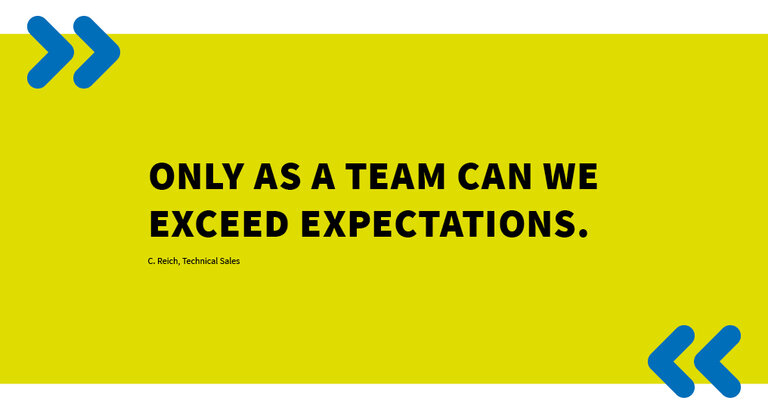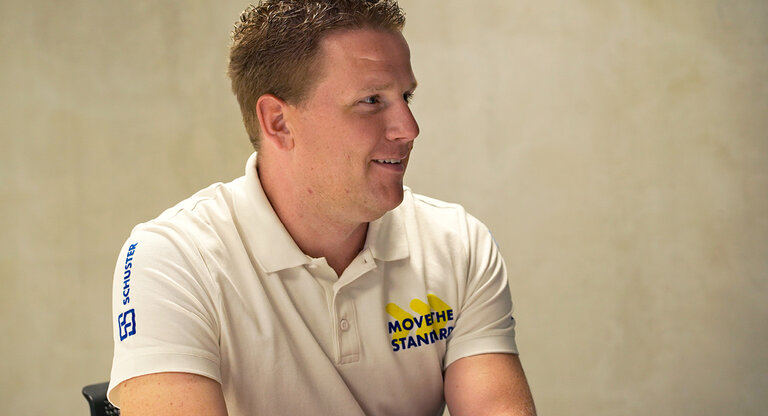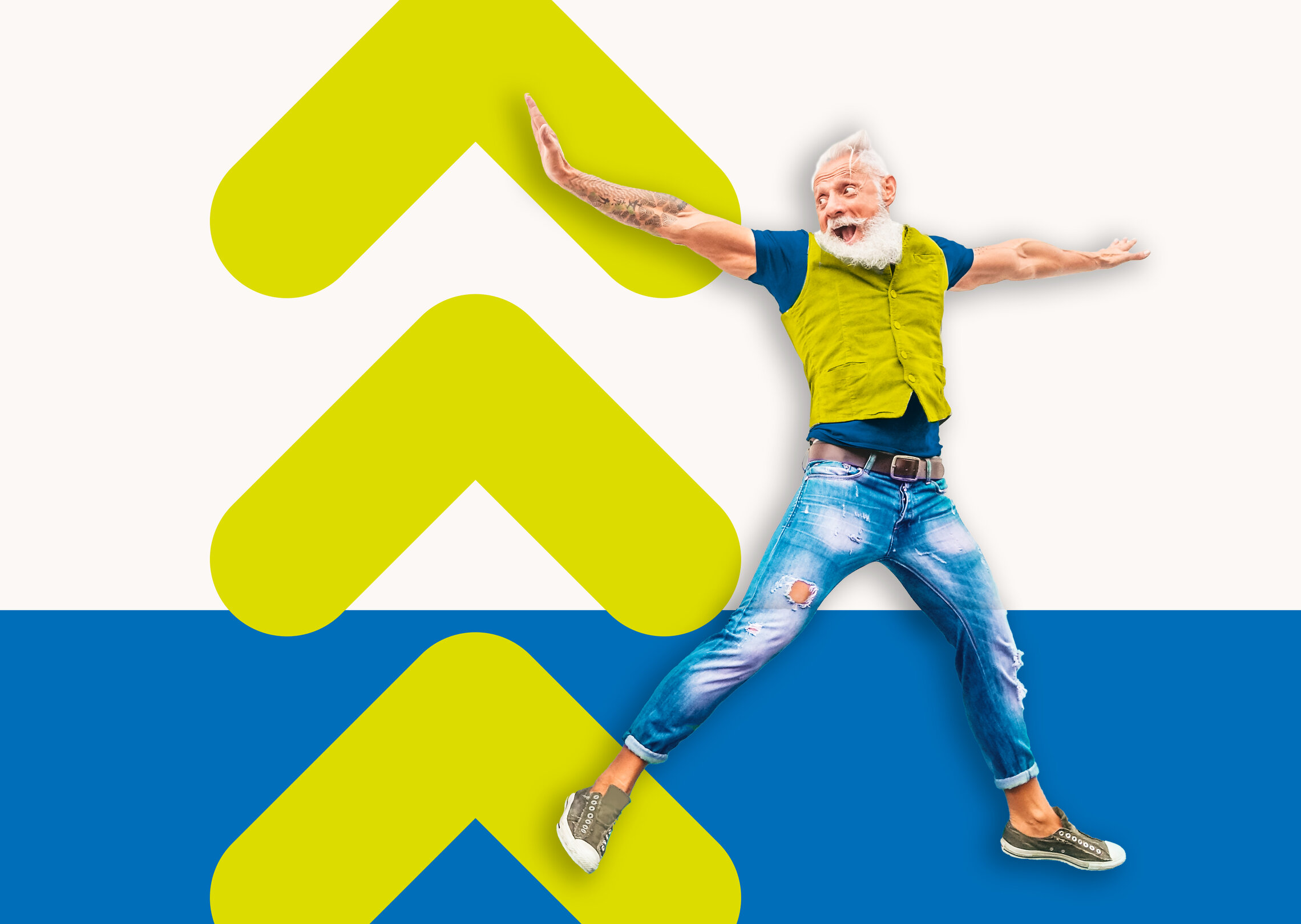
Of machines and people
Schuster Maschinenbau enables manufacture of medical implants.
Morning light in Denklingen. Cloud shadows move across meadows and wheat fields. Light falls on a large factory hall in front of which employees are parked: our engineers, accountants, quality controllers. Here we open the doors of the factory halls for innovative technology of tomorrow.
In bright offices, tidy production halls, large storage areas, we work together on machines that could define a new standard in some industries. Machines that in the future will manufacture new possibilities even from difficult materials - in series. For people who can no longer move easily.
For such a goal, our team itself works like a machine: a community machine, every part, perfectly matched. Everyone knows everybody. Some employees have been with the company for decades, several generations work side by side. Relatives, childhood friends, fathers and sons. We stick together here, come what may. We are united by work and leisure. And friendships that last a lifetime.


The VD 20 – a machine for the fine and the coarse.
You can't really machine a material like advanced ceramics very well, especially not as a green body1. Really not? Admittedly, it is hardly possible with conventional machines.
But high-performance ceramics offer many advantages that are especially needed in medical technology: Ceramics are heat-resistant, biocompatible, lightweight and environmentally friendly. Ceramics are insensitive to most chemical substances. Ceramics are resistant to wear. In other words, ceramics are the perfect material for medical implants. Good reasons for us to develop a machine that can process green compacts made of high-performance ceramics.
Our challenges? Many. Here are two examples:
1. Dust. A green body is an abrasive2 material that produces a lot of dust during machining. Not every machine can handle this. Dust needs extraction systems for the finest particles and plenty of air flowing in. A vertical workspace is perfect for good air circulation.
2. Green body. A green body is sensitive and reacts to the smallest changes in temperature and pressure. If, for example, a component is pressed even slightly during machining, this can lead to microcracks on the surface or to impressions. Defects often only become apparent during quality control. Therefore, we adhere to one rule: the higher the quality of the processing, the higher the quality of the component.
Every challenge led to new solutions. The result? A machine that can take on even the finest dust: the VD 20, type: vertical lathe3. We built it to accurately turn, drill and mill even powder materials4 - with precision like never before. And to harden these materials afterwards with sintering processes5.
The VD 20 – a machine that revolutionizes medical technology.
The use of high-performance ceramics for implants in medical technology is groundbreaking, especially in terms of technology, efficiency, material processing. A vertical turning machine like the VD 20 can now produce implants from green bodies - in custom work, highest quality and in series production with the utmost care.
Traditionally, medical implants are made of metal alloys. While they offer a patient stability, they also have disadvantages. Metal implants wear out over time and can release harmful abrasive particles into the body. This can cause tissue damage and inflammation. Another unpleasant side effect: metal implants need to be replaced, on average after 10 years.
We can offer solutions that improve people's lives in the long term. This is a great motivation for all of us. That's why we work on our machines and products with particular care and dedication.
The VD 20 – a machine that moves people.
The processing of high-performance ceramics creates many advantages for patients. After surgery, the patient is back on his feet more quickly because ceramics shorten the healing process. Ceramics are also significantly lighter than metal and reduce the stress on the bone surrounding the implant.
Ceramic is not only strong and durable, it is biocompatible. Ceramic bonds with human tissue and minimizes the risk of immune reaction or rejection of the implant.
The hardness and wear resistance of ceramics ensure that implants last a lifetime. Patients no longer have to worry about replacing implants in the near future.
With VD 20, every employee at Schuster is helping people to lead active, carefree and pain-free lives again. We want to move people who can no longer move. And those who move a lot live healthier and hopefully longer.
Technical glossary:
1. Green body (green compact)
A green body or green compact is a formed workpiece of metal powder or ceramic that has not yet been sintered. In this state it is still soft and green, hence the name "green body". Comparable to sidewalk chalk from childhood.
2. Abrasive
Abrasive is a material that is hard, coarse-grained or scratchy. Abrasives are often used in grinding or polishing processes to smooth surfaces, remove impurities, or change shapes. Examples of abrasives include sandpaper, abrasives, or grinding stones.
3. Vertical lathe
A vertical lathe is a machine tool in which a workpiece is clamped vertically in the fixture - for turning, milling, drilling.
4. Powder material
A powder material is a material in fine powder form. Powders can be made of such materials as metals, ceramics, plastics, or other materials. Powder materials can be used to produce complex shapes and structures by collecting the powder and then solidifying it into solid objects using heat, pressure or chemical reactions.
5. Sintering
Sintering is a process in which powder or small particles of a material, often metals or ceramics, are heated until they almost melt. After a green body is formed, it is fired, which makes it solid, durable, and a finished ceramic piece.













